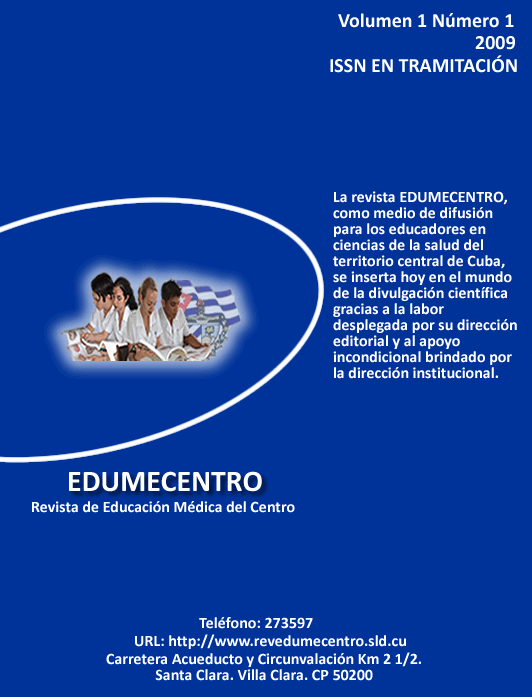Ethics in the teaching of human anatomy: from corpse to virtual reality
Keywords:
Medical ethics, bioethics, anatomy teachingAbstract
Although the human anatomy teaching has gradually changed, the use of corpses or some of its parts is necessary for teaching, surrounded of respect according to activities of highly scientific-technical value for the educative influences that the teaching institutions of the national health system can exert. Also, the learning in the living organism, either directly or indirectly, demands a responsible attitude from teachers and students, either legally or ethically, because of its most immediate relation to the professional practice. The technologies of information and communication are an excellent didactic resource for the study of human anatomy, but it should have a place as a complementary alternative for the use of anatomical pieces, models and other resources as the learning with the living subject, because the excessive and exclusive use in the medical education can carry a negative ethical implication as the co adjuvant factor of becoming medically inhuman, at the edge of technical problems that the learning of this practice can carry out.Downloads
Download data is not yet available.
Published
2013-01-30
How to Cite
1.
Wong Orfila T, Gutiérrez Maydata A. Ethics in the teaching of human anatomy: from corpse to virtual reality. EDUMEC [Internet]. 2013 Jan. 30 [cited 2025 Nov. 28];1(1):56-64. Available from: https://revedumecentro.sld.cu/index.php/edumc/article/view/16
Issue
Section
ARTÍCULO ORIGINAL
License
Los autores que publican en esta revista están de acuerdo con los siguientes términos:- Los autores/as conservarán sus derechos de autor y ceden a la revista el derecho de primera publicación de su obra, el cuál estará simultáneamente sujeto a una Licencia Creative Commons Reconocimiento-NoComercial-CompartirIgual 4.0 Internacional (CC BY-NC-SA 4.0) que permite a terceros compartir la obra siempre que se indique su autor y su primera publicación esta revista.
- Los autores pueden establecer por separado acuerdos adicionales para la distribución no exclusiva de la versión de la obra publicada en la revista (por ejemplo, situarlo en un repositorio institucional o publicarlo en un libro), con un reconocimiento de su publicación inicial en esta revista.
- Se permite y se anima a los autores a difundir sus trabajos electrónicamente (por ejemplo, en repositorios institucionales o en su propio sitio web) antes y durante el proceso de envío, ya que puede dar lugar a intercambios productivos, así como a una citación más temprana y mayor de los trabajos publicados (Véase The Effect of Open Access) (en inglés).










